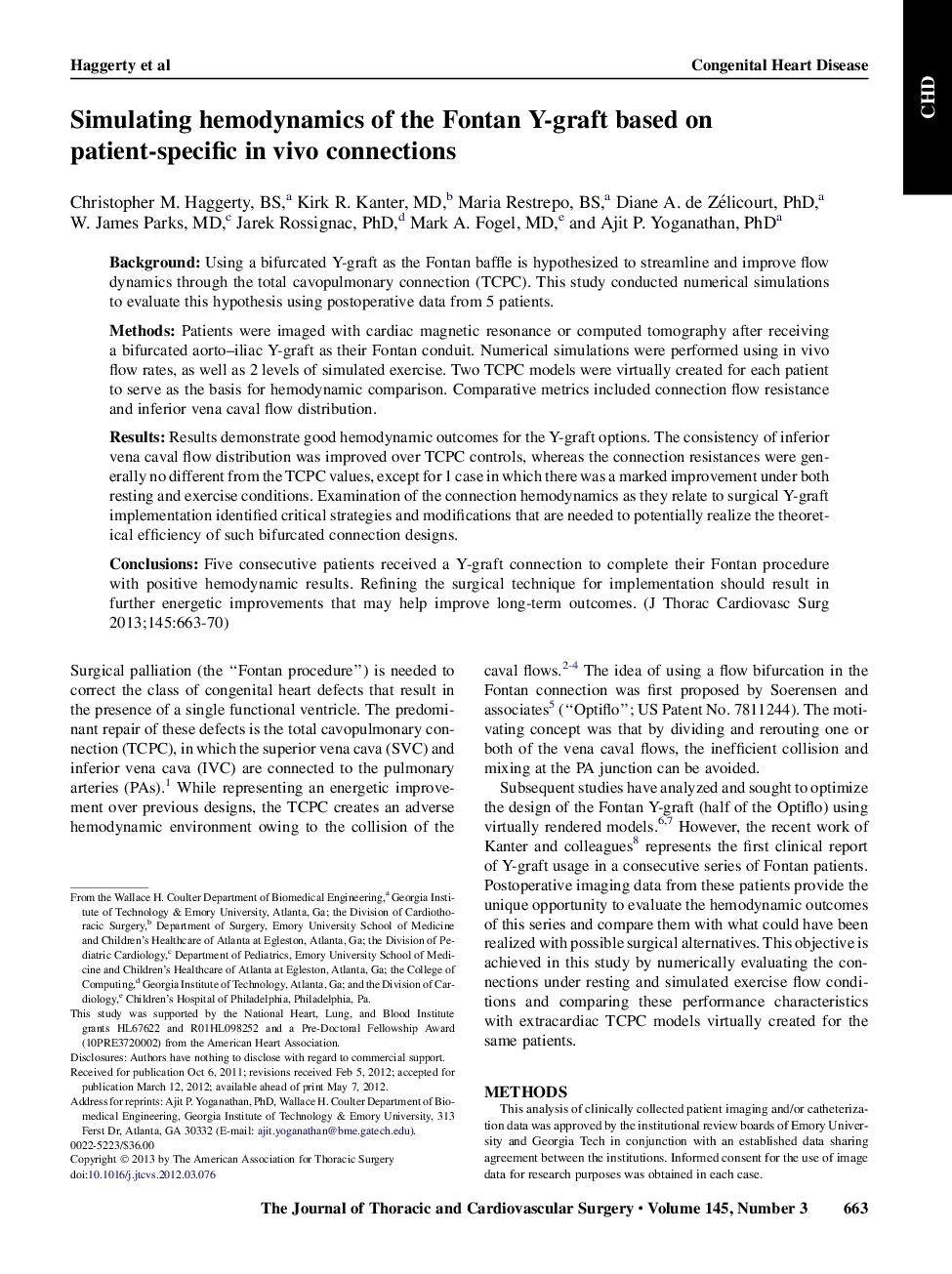| Article ID | Journal | Published Year | Pages | File Type |
|---|---|---|---|---|
| 2981104 | The Journal of Thoracic and Cardiovascular Surgery | 2013 | 8 Pages |
BackgroundUsing a bifurcated Y-graft as the Fontan baffle is hypothesized to streamline and improve flow dynamics through the total cavopulmonary connection (TCPC). This study conducted numerical simulations to evaluate this hypothesis using postoperative data from 5 patients.MethodsPatients were imaged with cardiac magnetic resonance or computed tomography after receiving a bifurcated aorto–iliac Y-graft as their Fontan conduit. Numerical simulations were performed using in vivo flow rates, as well as 2 levels of simulated exercise. Two TCPC models were virtually created for each patient to serve as the basis for hemodynamic comparison. Comparative metrics included connection flow resistance and inferior vena caval flow distribution.ResultsResults demonstrate good hemodynamic outcomes for the Y-graft options. The consistency of inferior vena caval flow distribution was improved over TCPC controls, whereas the connection resistances were generally no different from the TCPC values, except for 1 case in which there was a marked improvement under both resting and exercise conditions. Examination of the connection hemodynamics as they relate to surgical Y-graft implementation identified critical strategies and modifications that are needed to potentially realize the theoretical efficiency of such bifurcated connection designs.ConclusionsFive consecutive patients received a Y-graft connection to complete their Fontan procedure with positive hemodynamic results. Refining the surgical technique for implementation should result in further energetic improvements that may help improve long-term outcomes.
